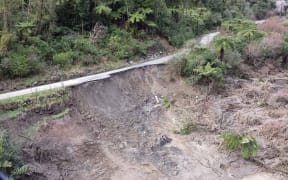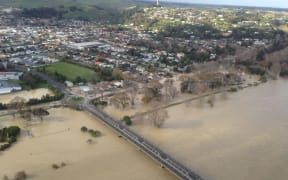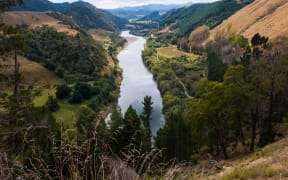Whānau from the Whanganui River are working to rebuild shelters on an ancient marae site usually only accessible by boat.
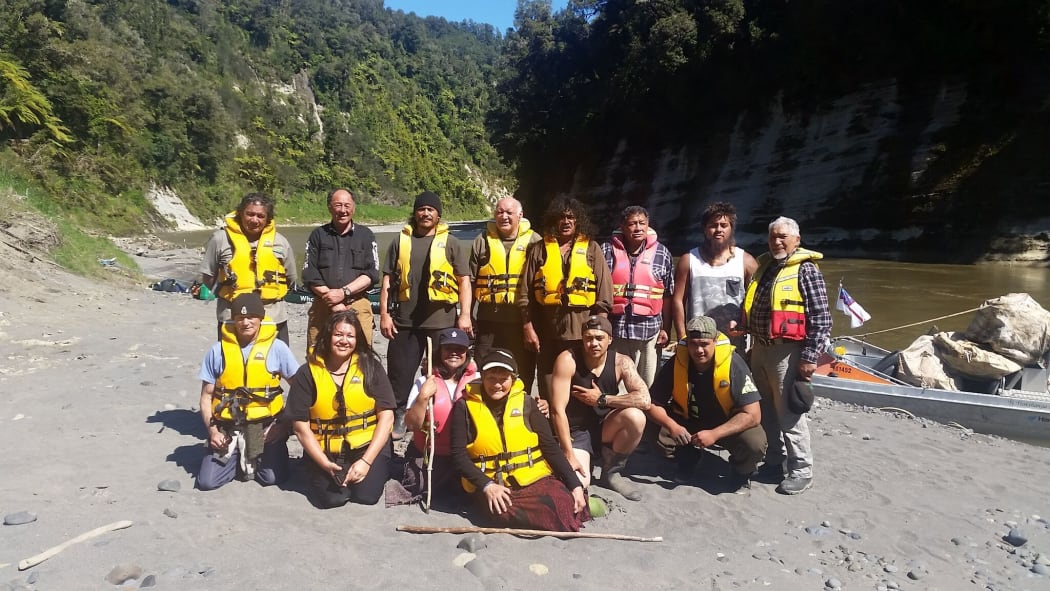
Whānau involved in the Mangapāpapa Marae project. From left (back row): Peter Rihia, George Matthews, Aiden Gilbert, Tommy Treanor, Paora Haitana, Robert Cribb, Toiora Hawira, Hokio Ngātaiērua-Tinirau. Front row: Arthur Edmonds, Moana Dawson, Rihi Ponga, Jackie Cash-Hose, Te Riaki Hawira, Ropata Cribb. Photo: uenuku.iwi.nz
In a matter of weeks, the whānau hope to have shelters built at Mangapāpapa Marae - in time for dozens of iwi paddlers taking part in an annual pilgrimage down the river in January.
The marae is nestled in native bush in the upper reaches of the Whanganui River, 65km downstream from Taumarunui.
Little more than a cooking site and toilets has been left standing.
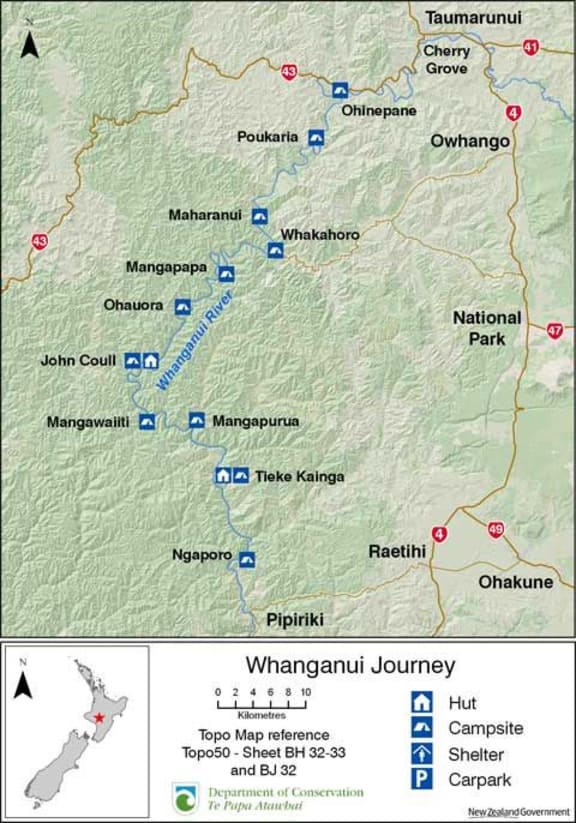
Whanganui River map of DoC campsites and huts. Photo: whanganui.co.nz/Department of Conservation
Tamahaki Kaunihera o Ngā Hapū chairman Paora Haitana said the old buildings had to be pulled down because the whānau did not have permission to rebuild them.
"What we are trying to do now is comply with all these consents, comply with these things that are laid down by the Department of Conservation and the district council, and from there to actively noho (stay) again on our ancient marae there."
But the remote location makes building there a tough job. Surrounded by dense bush, it takes a week to walk from Taumarunui - or, usually, requires a boat trip.
One plan is to fly kitset shelters to Mangapāpapa to be put together.
Uenuku Charitable Trust chairman Aiden Gilbert said whānau had been there in recent weeks, clearing the overgrowth.
"There's no other place like it. It's spiritual, it's home for many from Ngāti Kaponga, the hapū, and it's an urupā (cemetery) as well.
"Now we're in discussions about putting up buildings, for a start, to accommodate some of our people that journey down the river."
Mr Gilbert was referring to the 100 or so iwi members who canoe down the Whanganui River for two weeks every January on the Tira Hoe Waka pilgrimage.
They stay overnight at various marae to wānanga or learn their heritage, and Mr Haitana said it would be fitting for them to stay at Mangapāpapa overnight.
"Mangapāpapa was set up more importantly as a place for our people to wānanga, whether you are on the Tira Hoe Waka or [with] our people who take guided tours down the river.
"To take their manuhiri (guests) up there and respect our tikanga (customs) and our culture and our kawa (protocols)."
Mr Gilbert said it was a very significant spot on the journey down the awa for his people, especially those from the upper reaches.
"It's a positive move forward for us... to finally put into practice the dreams and the aspirations of our old people."
The group will meet with the Department of Conservation tomorrow to renew their authority over the land, and arrange permissions to build there.

